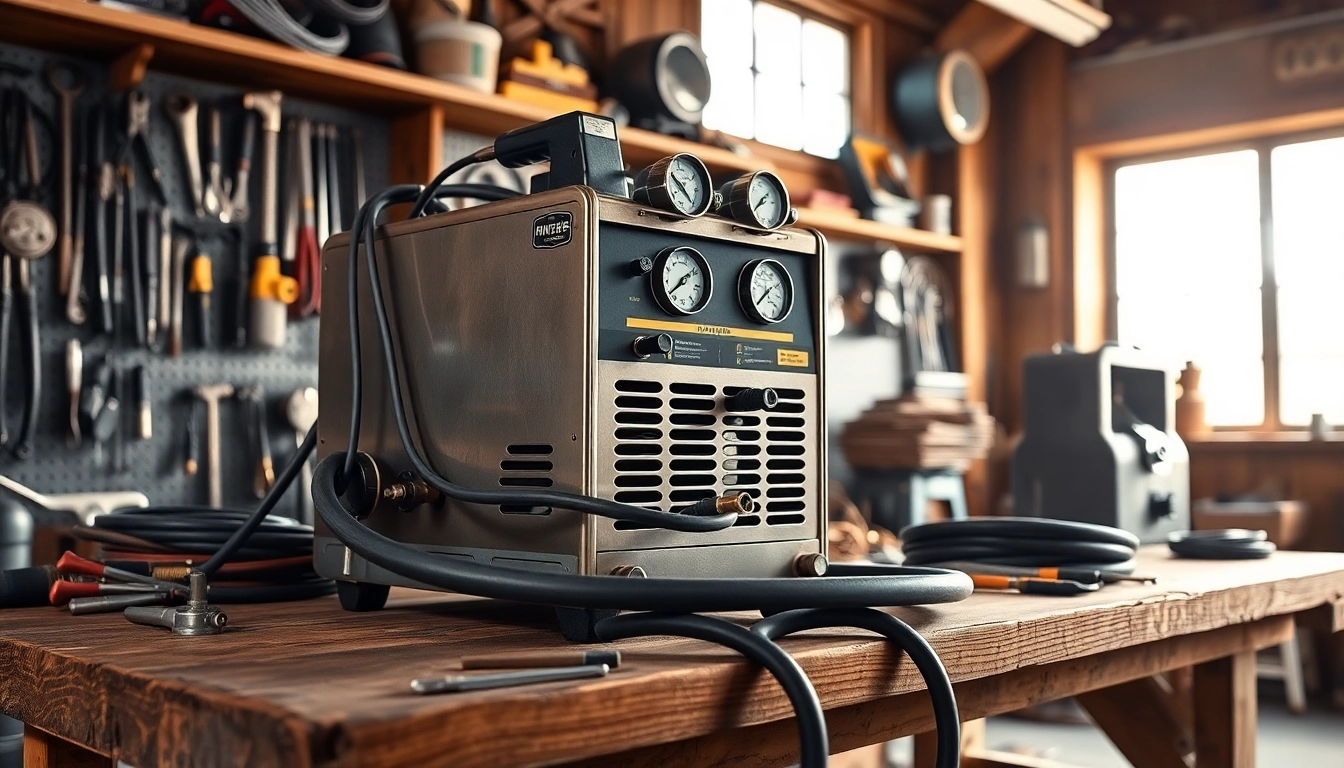
Introduction to Oxy Acetylene Welding Kits
Oxy acetylene welding kits are essential tools for metal workers and DIY enthusiasts alike, offering a versatile solution for a range of welding and cutting tasks. The oxy acetylene welding kit combines oxygen and acetylene gases to create a flame that can reach temperatures high enough to melt and join metals. These kits are commonly used in construction, manufacturing, and automotive industries as they provide a reliable means to accomplish various tasks such as cutting metal, welding, brazing, and soldering.
What is an Oxy Acetylene Welding Kit?
An oxy acetylene welding kit typically consists of two gas cylinders: one containing oxygen and the other containing acetylene. The gases are mixed in precise ratios through a torch, producing a high-temperature flame that can easily melt ferrous and non-ferrous metals. The setup usually includes various components such as pressure regulators, hoses, mixers, and cutting tips tailored for specific welding or cutting tasks. This combination makes oxy acetylene welding kits a popular choice for both professionals and hobbyists.
Popular Uses and Applications
The versatility of oxy acetylene welding kits opens up a world of possibilities in various applications, including:
- Metal fabrication and assembly
- Piping and tubing work in plumbing and HVAC systems
- Automotive repairs, including welding chassis and frames
- Artistic metalwork and sculpture
- Repairing and maintaining tools and machinery
These applications highlight the necessity of oxy acetylene welding kits in different sectors, demonstrating their utility in both practical and artistic endeavors.
Benefits of Using Oxy Acetylene Welding Kits
Using oxy acetylene welding kits provides numerous advantages:
- High Temperature Output: The oxy acetylene flame can reach temperatures of over 3,000°C, making it suitable for heavy-duty tasks.
- Portability: Many kits are designed for easy transport, allowing for fieldwork or working in locations without a power supply.
- Wide Range of Applications: Ideal for welding a variety of metals, including steel, aluminum, and brass.
- Low Initial Investment: Compared to other welding methods, oxy acetylene kits can be relatively affordable and accessible.
Components of an Oxy Acetylene Welding Kit
Essential Parts You Need
A complete oxy acetylene welding kit should include the following essential components:
- Oxygen Cylinder: A cylinder containing high-pressure oxygen.
- Acetylene Cylinder: Contains acetylene gas, which is highly flammable and stored under pressure.
- Pressure Regulators: Controls the pressure of gas coming from the cylinders to the torch.
- Welding Torch: The device where oxygen and acetylene mix, allowing the user to control the flame.
- Cutting Tips: These are interchangeable tips suited for various welding and cutting needs.
- Gas Hoses: Flexible hoses that connect the regulators to the torch.
Understanding Accessories and Add-ons
Beyond the essential components, several accessories can enhance the functionality and efficiency of an oxy acetylene welding kit:
- Flashback Arrestors: These safety devices prevent the flame from traveling back through the hoses to the gas cylinders.
- Welding Goggles: Protective eyewear designed specifically for welding, preventing eye damage from intense light and heat.
- Heat-resistant Gloves: Protects hands from burns and injuries while handling hot materials.
- Welding Clamps and Fixtures: Essential for securing workpieces in place during welding operations.
Safety Equipment and Precautions
Safety should always be a top priority when operating oxy acetylene welding kits. Users must have the following safety equipment:
- Protective Clothing: Fire-resistant clothing to minimize burn injury risks.
- Respirators: Protects against inhaling harmful fumes produced during the welding process.
- Fire Extinguisher: An appropriate type of fire extinguisher should be accessible to handle emergencies.
Proper training on handling equipment, understanding gases, and implementing safety measures is crucial for avoiding accidents and ensuring a safe welding environment.
Choosing the Right Oxy Acetylene Welding Kit
Factors to Consider in Your Selection
When choosing an oxy acetylene welding kit, consider the following factors:
- Welding Type and Thickness: Determine what materials and thicknesses you will be welding. Kits vary in capacity to suit light or heavy duty tasks.
- Portability Needs: If you need to move the kit frequently, opt for lighter models designed for mobility.
- Brand and Warranty: Invest in well-known brands that provide adequate customer support and warranty options.
Comparative Analysis of Leading Brands
Different brands offer distinct features, price points, and functionalities. Here’s a brief comparison of some popular oxy acetylene welding kit brands:
- Victor: Known for its high-quality equipment and innovative technology, Victor kits often come with advanced safety features and a larger range of accessories.
- Harris: A reputable brand offering durability at competitive prices. Their kits are user-friendly, making them ideal for beginners.
- Smith: Smith products tend to focus on versatility, catering to both casual users and experienced welders with robust options.
Budgeting for Your Oxy Acetylene Welding Kit
When budgeting for an oxy acetylene welding kit, consider not just the initial purchase price, but also ongoing costs such as:
- Refilling gas cylinders.
- Regular maintenance and parts replacement.
- Protective gear and safety equipment.
A comprehensive budget ensures that you not only acquire the welding kit but are also prepared for future expenditures associated with its operation.
Operating an Oxy Acetylene Welding Kit Safely
Step-by-Step Setup Guide
Setting up an oxy acetylene welding kit correctly is paramount for safe operations. Follow these steps:
- Check all equipment for damage before use.
- Securely transport and set the cylinders upright, away from flammable materials.
- Attach the regulators to the cylinders and ensure they are tightly closed.
- Connect hoses to the regulators, ensuring the right connections according to the color coding (usually green for oxygen and red for acetylene).
- Open the oxygen valve slowly, then the acetylene valve, adjusting pressures as needed.
- Conduct a leak test with soapy water to identify any leaks before igniting the torch.
- Ignite the torch using a flint striker, never a match or lighter, to avoid burns.
Common Mistakes to Avoid
To ensure safety and efficiency, avoid these common pitfalls:
- Neglecting regular equipment checks that can lead to leaks or malfunction.
- Using incompatible attachments that could lead to dangerous situations.
- Overlooking safety protocols, such as wearing protective gear and ensuring proper ventilation.
Maintaining Your Equipment
Regular maintenance of your oxy acetylene welding kit can prolong its life and performance. Consider:
- Inspecting hoses for cracks or wear and replacing them as necessary.
- Cleaning the torch regularly to remove buildup and ensure proper gas flow.
- Storing gas cylinders in a well-ventilated area, upright, and secured to prevent tipping.
Incorporating these practices into your maintenance regime will keep your equipment functioning safely and efficiently.
Advanced Techniques Using Oxy Acetylene Welding Kits
Techniques for Different Metal Types
Understanding the characteristics of various metals allows for more effective and efficient welding. Here are tailored techniques for different metal types:
- Steel: Generally welds easily with oxy acetylene. Use a neutral flame to avoid oxidation.
- Aluminum: Requires a higher flame temperature; preheating the metal can yield better results.
- Brass: Joint wire should be heated first before introducing the filler; a flux may be helpful.
Enhancing Your Skills with Practice
Improving your oxy acetylene welding skills involves practice and continuous learning. Consider scheduling regular practice sessions focusing on:
- Joint types: Lap, butt, and edge joints.
- Adjusting the flame for different metals and thicknesses.
- Working on visual aesthetics of the weld bead.
Seeking feedback from experienced welders can also accelerate your skill development.
Future Innovations in Welding Technology
The landscape of welding technology is ever-evolving. With advancements in automation and robotics, we may see oxy acetylene systems integrated with AI to enhance precision and efficiency. Innovations may also include:
- Sensors for real-time monitoring of temperature and gas flow.
- Smart safety devices that provide alerts in case of equipment malfunction.
- Portable power solutions that allow for increased mobility without sacrificing performance.
Keeping abreast of these technological trends can prepare welders for future opportunities and techniques in oxy acetylene welding.







